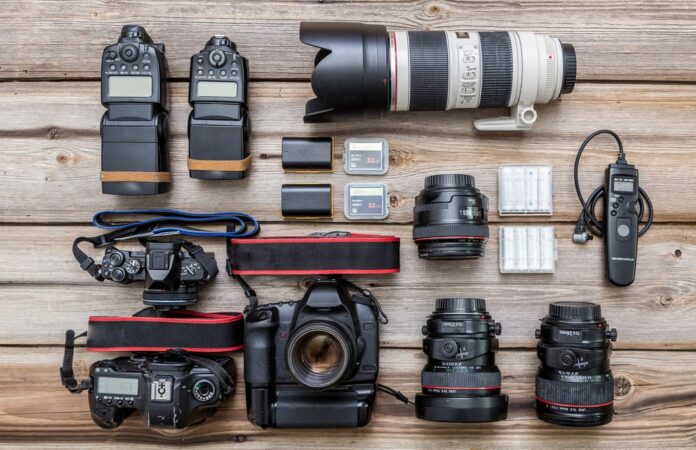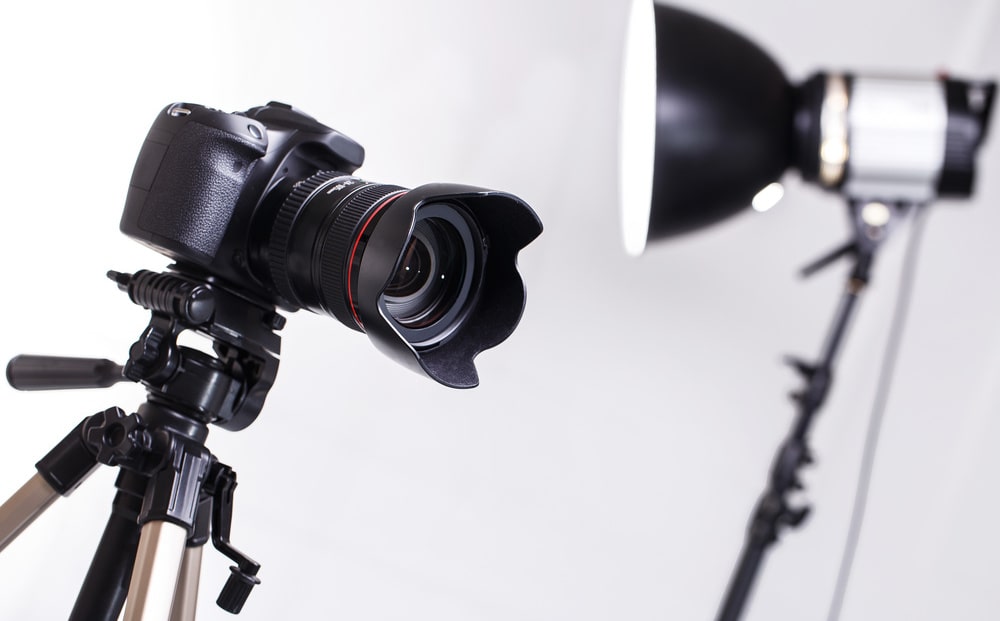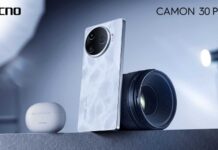
If you’re currently thinking of starting a hobby in photography, you probably have started researching the camera equipment, tools, and accessories you need. But before you feel overwhelmed with a long list, remind yourself to slow down. You don’t have to go all out and break the bank in purchasing the most expensive camera devices.
As a photographer, while it’s true that you should have the right skills to produce the best photos, many aspects also rely on the quality and condition of your camera lenses and other equipment. It’s time to gradually source out the best camera tools like the ones you can find in the next page.
Consider this checklist to acquire some of the essential items you need in your photography journey.
1. Tripod:
One of the most important things when taking high-quality photos is to ensure that the photo is taken in a controlled setting. Wherever you are and in whatever situation, this can be achieved when utilizing a good tripod. Whatever kind of photos you want to snap, whether portraits or landscapes, a tripod can help you attain the best quality image output.
Fortunately, there are a wide variety of tripod products in the camera industry today. In fact, there are also the best tripods for mobile gadgets and smartphones available. Some key aspects to consider are their load capacity, height range, overall stability, head and plate quality, weight, and additional features. Go for a convenient tripod to carry anywhere else, especially if you frequently travel for photos.

Photographers often take many shots of the same scene when snapping products and landscapes. Hence, a tripod allows you to get the most stable way of taking those snapshots. You can use a tripod to hold your product or portrait subject and make adjustments with your two hands. Furthermore, a tripod makes it possible for you to capture moving objects without the possibility of getting blurry shots too.
2. Camera:
If you’re finally ready to invest in a durable and well-graded camera, it’s best to do thorough research on what brands and features are best in the market today. Every photo-capturing device has its own strengths and weaknesses, and the key is to compare them all. Ensure to check out their important features, such as the sensor’s sensitivity to light, the aperture feature, frame rate, white balance, and shutter speed.
If you’re not well-versed with these features yet, it’s best to start learning about their relevance by reading camera resources and how to maximize these features. No matter what your goals are as a photographer, make sure to consider buying a camera based on your objectives and needs. Other features to consider are mirrorless and lightweight. If you’re constantly on the move as a travel photographer, these two variables will help you in your photography journey.
3. Shutter Remote:
While cameras usually have built-in timers, investing in a shutter remote is another must-have accessory. This allows you to take snapshots discreetly without disrupting the objects due to the timer sound. And it can make you take sharper photos and get rid of blurry ones.
Infrared and Bluetooth remote buttons are available for some cameras. On the other hand, remote shutter releases come in various forms, ranging from simple ones where you simply press a button to very complex and expensive ones that allow you to delay the shutter’s release or take a series of photos in a specific interval. Different shutter remote options will support you in diversifying the quality of photos you can take in varying environments.
4. Lens Filters:
The purpose of lens filters is primarily to act like your lens’s sunglasses. While it’s possible to operate the camera without them, installing these filters improves the output’s quality. A filter reduces glare and reflections, enhances colors, reduces light entering a lens, and so forth. Lens filters each serve a specific purpose, as each is designed to enhance the look of an image in a certain way.
Lens filters can enhance image quality and prevent lens damage when used properly. Here are the three kinds of lens filters worth investing in:
- Ultra Violet (UV) Filters:
UV filters are also referred to as Haze filters and they’re one of the simplest lens filters available. They’re clear filters with a coating that reduces haziness by blocking ultraviolet light waves. Instead of improving the quality of images, these filters are focused on protecting your camera device. The filters act to propel dust, debris, water splash, and other damage on the camera. - Natural Density (ND) Filters:
Grey-toned ND filters reduce light entering a lens, resulting in a slower shutter speed and a longer exposure. You can use this lens filter when shooting in bright light. You have the option to attach this filter only when the time you need to use it. Otherwise, it’s best to detach it from the camera body. - Polarizing Filters:
Clouds and skies are made more contrasty with polarizing filters. To adjust the polarization, you manually rotate the secondary mount. Their use darkens overly light skies and enhances color saturation, while their use on water surfaces eliminates glare and reflections. Many landscapes and travel photographers love this kind of lens filter.
Conclusion
Whether you intend to learn photography as a hobby or as a job, investing in the best camera equipment and accessories, especially those mentioned in this checklist, is paramount. No matter your object or subject, you need some great photography techniques and tools to develop the best snapshots. The next step is to get familiar with a number of useful web features to put your photography skills to a higher level.





























